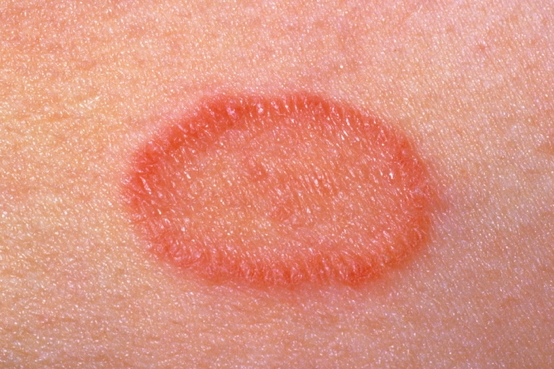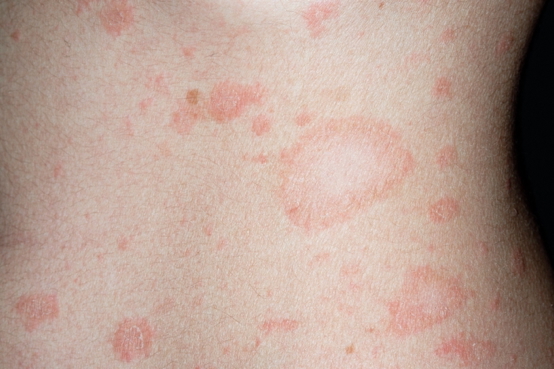Table of Contents
Overview – Pityriasis Rosea
Pityriasis rosea is a self-limiting, post-viral exanthem that typically affects adolescents and young adults. It begins with a distinctive “herald patch” followed by the development of multiple scaly, oval red plaques, primarily on the trunk. Often confused with tinea or psoriasis, pityriasis rosea is benign, non-contagious, and typically resolves within 6–12 weeks. Recognition of its classic distribution and course is key for clinical diagnosis and reassurance.
Aetiology
- Likely a viral aetiology
- Often follows an upper respiratory tract infection
Epidemiology
- Most common in teenagers and young adults
- Occurs sporadically; not typically seasonal
- No gender predilection
Pathophysiology
- Strongly associated with reactivation of HHV-6 or HHV-7
- These same viruses cause roseola infantum
- Occasionally triggered by influenza viruses or even vaccines
Clinical Features
Herald Patch
- First sign of the rash; appears 1–20 days before the generalised eruption
- Oval, pink-red plaque, typically on the trunk
- Measures 2–5 cm in diameter
- Often has a fine collarette of scale
Secondary Eruption
- Appears several days after the herald patch
- Multiple oval, red, scaly plaques develop
- Distribution is often along Langer’s lines → “Christmas tree” pattern on back
- Commonly affects:
- Chest and back
- Thighs, neck, and upper arms
- Lesions may be mildly itchy or asymptomatic
Duration
- Typically lasts 6–12 weeks
- May leave temporary post-inflammatory pigmentation


Management
- Reassurance is key – it is self-limiting and non-contagious
- Supportive care:
- Plain water baths or soap substitutes (e.g. bath oils, aqueous cream)
- Emollients for dry or itchy skin
- Sun exposure may help resolution
- If symptomatic:
- Topical corticosteroids to reduce itch
- Oral antihistamines for pruritus
- Acyclovir may reduce disease duration if given early
- Phototherapy in extensive or resistant cases
Summary – Pityriasis Rosea
Pityriasis rosea is a benign, self-resolving skin condition caused by viral reactivation, typically seen in young adults. It starts with a herald patch followed by a widespread, scaly rash that follows a characteristic distribution. Treatment is mainly supportive, with topical steroids and antivirals used in symptomatic cases. For a broader context, see our Skin & Dermatology Overview page.